What Is Louis Armstrong's Favorite Color
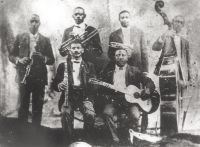
Photo Hogan Jazz Archives
Even before jazz, for most New Orleanians, music was not a luxury as it often is elsewhere–it was a necessity. Throughout the nineteenth century, diverse ethnic and racial groups — French, Spanish, and African, Italian, German, and Irish — found common cause in their love of music. The 1870s represented the culmination of a century of music making in the Crescent City. During this time, the European classical legacy and the influence of European folk and African/Caribbean elements were merged with a popular American mainstream, which combined and adapted Old World practices into new forms deriving from a distinctive regional environment. Just after the beginning of the new century, jazz began to emerge as part of a broad musical revolution encompassing ragtime, blues, spirituals, marches, and the popular fare of "Tin Pan Alley." It also reflected the profound contributions of people of African heritage to this new and distinctly American music.
The early development of jazz in New Orleans is most associated with the popularity of bandleader Charles "Buddy" Bolden, an "uptown" cornetist whose charisma and musical power became legendary. After playing briefly with Charley Galloway's string band in 1894, Bolden formed his own group in 1895. During the next decade he built a loyal following, entertaining dancers throughout the city (especially at Funky Butt Hall, which also doubled as a church, and at Johnson and Lincoln Parks). In 1906 he collapsed while performing in a street parade. The following year he was institutionalized at the state sanitarium at Jackson for the remainder of his life.
Dancing had long been a mainstay of New Orleans nightlife, and Bolden's popularity was based on his ability to give dancers what they wanted. During the nineteenth century, string bands, led by violinists, had dominated dance work, offering waltzes, quadrilles, polkas, and schottisches to a polite dancing public. By the turn of the century, an instrumentation borrowing from both brass marching bands and string bands was predominant: usually a front line of cornet, clarinet, and trombone with a rhythm section of guitar, bass, and drums. Dance audiences, especially the younger ones, wanted more excitement. The emergence of ragtime, blues and later, jazz satisfied this demand. Increasingly, musicians began to redefine roles, moving away from sight-reading toward playing by ear. In contrast to society bands such as John Robichaux's (representing the highly-skilled "Frenchmen" or Creoles of color), bands such as Bolden's, Jack Laine's Reliance, or the Golden Rule worked out their numbers by practicing until parts were memorized. Each member could offer suggestions for enhancing a piece of music, subject to the approval of the leader. Gradually, New Orleans jazzmen became known for a style of blending improvised parts–sometimes referred to as "collective improvisation". It appealed to younger players and dancers alike because it permitted greater freedom of expression, spontaneity, and fun.
After Bolden, several bands competed for control of the "ratty" (as it was called) music market. Trombonist Frankie Dusen took over Bolden's group renaming it the Eagle Band after a favorite saloon. Cornetist Manuel Perez had the Imperial Orchestra–a dance band featuring "Big Eye" Louis Nelson Delisle on clarinet. He also led the Onward Brass Band in a looser, more improvisational direction. Other dance bands, such as the Olympia, Superior, and the Peerless, began to play the exciting sound of jazz. "Papa" Laine's Reliance bands continued to attract young white musicians who wanted to play jazz. However, the band which best represented the transition from Bolden's early experiments to the classical jazz bands of the 1920's was Kid Ory's Creole band.
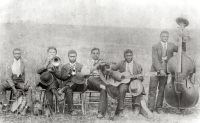
Photo Hogan Jazz Archives
Edward "Kid" Ory, the son of a white Frenchman and a Creole woman of Afro-Spanish and native American heritage, was born in La Place, Louisiana, and classified as a Creole of color. In 1901, at the age of 14, he was already leading a band of his own, organizing dances for his neighbors, and casting an ambitious eye toward New Orleans, the Mecca of jazz. In 1907 Ory took his Woodland Band to the city. Over the course of the next decade, he upgraded his personnel to include such future jazz stars as Joe Oliver, Louis Armstrong, Johnny and Warren Dodds, and Jimmie Noone. Ory was also a talented promoter. It is said that he revolutionized the practice of "cutting contests" between bands that advertised on horse-drawn furniture wagons when he introduced the use of motorized trucks–no band could escape him! For several years his band held forth at Pete Lala's saloon in Storyville.
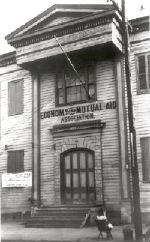
Photo Hogan Jazz Archives
The site of his greatest triumphs was probably Economy Hall — a dance hall in the Treme section, bordering on Storyville and the French Quarter. As the headquarters of the "Economy and Mutual Aid Association," the Economy was typical of numerous social aid and pleasure clubs and benevolent associations. These organizations provided a variety of social services, including brass band funerals and dances, to the New Orleans black community. Outside entrepreneurs like Ory, who maximized attendance at his dances could also rent the Economy by renting nearby Hope's Hall and keeping it closed. Ory's career as a bandleader in the Crescent City (1908-1919) coincided with the years in which the "collective improvisation" approach of New Orleans musicians reached maturity. His band became an incubator for the development of black jazz talent, much as Jack Laine's bands did for young white musicians. Ory was the first black New Orleans jazz bandleader to make a recording — "Ory's Creole Trombone" in 1921.
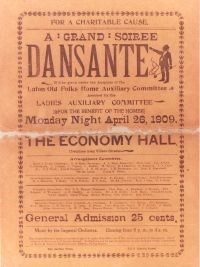
Photo Hogan Jazz Archives
The early development of jazz in New Orleans was connected to the community life of the city, as seen in brass band funerals, music for picnics in parks or ball games, Saturday night fish fries, and Sunday camping along the shores of Lake Ponchartrain at Milneburg and Bucktown. There were also red beans and rice banquettes on Monday's, and nightly dances at neighborhood halls all over town. The New Orleans sound was "good time" music, delivered in a rollicking, sometimes rough manner, which suited everyday people seeking music "with a feeling." This spirit or emotional content connected the performer to the audience. It offered a musical communication in which all parties could participate (as with the "second line" dancers who turned out for brass band processions). Despite their popular success at home, New Orleans bands often experienced difficulty in trying to win over new audiences in places like Chicago, New York, and Los Angeles. Coinciding with the First World War (1914-1919), New Orleans musicians began to travel extensively. They frequently found themselves at an initial disadvantage in their attempts to introduce dancers to the New Orleans sound.
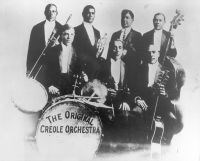
Photo Hogan Jazz Archives
The story of the original Creole Orchestra is a case in point. This band was organized in Los Angeles by bassist Bill Johnson, who traveled with a band to that city as early as 1908. By 1914, Johnson had attracted some of New Orleans best "hot" jazz players, including cornetist Freddie Keppard (widely regarded as Bolden's successor), clarinetist George Baquet, and violinist James Palao. While performing at a prizefight, the Creole band fell victim to the venom of a writer for the Los Angeles Times, who characterized their playing as "a vile imitation of music." Yet from 1914 to 1918, the band traveled throughout the country, playing prestigious theaters, which should have guaranteed success. However, theater audiences were not in a position to respond appropriately because New Orleans jazz was essentially dancing music. In 1916 the Victor Talking Machine Company offered Keppard and the Creole Orchestra an opportunity to record, but he refused. Keppard feared (with some justification) that recording would enable the competition to copy his style. When the Creole Orchestra disbanded in 1918, there was little to show for their efforts. The individual members went on to join or form new musical alliance as best they could. In retrospect, however, they were the first New Orleans style band to travel extensively, pioneering a path that would be followed by others.
Bill Johnson landed in Chicago, where a growing economy attending American entry into the Great War created a boom, which meant jobs for ambitious musicians. Johnson sent for Joe Oliver who, at age 33, had earned a reputation as one of the Crescent City's top cornetist. His early work with the Onward Brass Band, the Olympia, the Superior and the Eagle bands led to his association with Kid Ory in 1917. Then a series of problems resulting from police raids on the saloon where he was performing convinced him that he should pursue greener pastures elsewhere. Observers of the early New Orleans jazz scene, particularly Johnny Wiggs and Edmond Souchon, have credited Oliver as the first to depart from the Bolden/Keppard approach to leading a front line, which they described as more ragtime than jazz. Souchon and Wiggs heard Oliver many times at subscription dances at the Tulane University Gymnasium. His use of mutes to achieve vocal effects, his fluid and adventurous sense of rhythm, and his blues phrasing, made Oliver a major influence on all who followed, including Louis Armstrong, his most famous protégé. Oliver's presence in Chicago served as both an anchor and a magnet for other New Orleans musicians, and during the 1920's he led some of the most celebrated bands in jazz history.
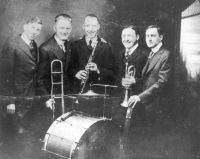
Photo Hogan Jazz Archives
Chicago was also the destination for many of the white jazz musicians who left New Orleans in search of fame and fortune. In 1915, trombonist Tom Brown took his band from Dixieland to the Windy City at the invitation of a talent scout who heard them on the sidewalks of the Vieux Carre. Cornetist Ray Lopez remembered that the band spent its first weeks at Lamb's Café trying in vain to entice dancers to respond to New Orleans music. Business picked up when the cast of a traveling show, "Maid in America," demonstrated how much fun could be had with a jazz band. (They had previously heard the group in New Orleans.) Brown then took his band (billed as the Five Rubes) to the vaudeville stage of New York, but they suffered the same fate as the Creole Band.
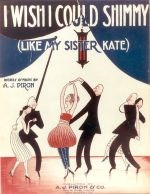
Photo Hogan Jazz Archives
The Original Dixieland Jazz Band (ODJB) was more successful. They arrived in Chicago in 1916 and then went to New York at the beginning of 1917. Crucial to the band's popularity was a booking at Reisenweber's, a cabaret in mid-Manhattan, where dancers were soon lining up (after some initial hesitation) to experience a night of "jazz". The band became an instant hit, which led directly to interest for the nation's top record manufacturers, Victor and Columbia, who were eager to exploit the new "jazz craze." After a failed audition for Columbia, the ODJB had greater success with a recording of "Livery Stable Blues" for Victor in February 1917. Within six months of its release, over one million copies had been sold, thus fusing the New Orleans sound with the term "jazz" in a commercial product which could be widely distributed. While sheet music continued to be an important medium for the spread of new music, phonograph records were far superior, capturing almost every nuance of a performance and conveying aspects of playing style that were essential to jazz but difficult to write down.
The records made by ODJB were extremely influential in spreading jazz throughout the nation and the world, but they also had an important impact on musicians back home in New Orleans. An advertisement by Maison Blanche (a local department store) affirmed that these records promoted all New Orleans music and were a model for further development: "Here is positively the greatest dance record ever issued. Made by New Orleans musicians for New Orleans people, it has all the 'swing' and 'pep' and 'spirit' that is so characteristic of the bands whose names are a by-word at New Orleans dances." Furthermore, despite the impact of segregation, the records' appeal transcended the color lines. Louis Armstrong was known to have collected the ODJB's records. Violinist Manuel Manetta recalled being let go by one of the City's most successful bands because "Joe Oliver and Kid Ory wanted to follow the format of the Dixieland Jazz Band and use only five pieces." The success of the Original Dixieland Jazz Band through the medium of phonograph recording completed a revolution in dance and instrumentation begun in the 1890's by Buddy Bolden and fathered some two decades earlier. This standardized the jazz band lineup and demonstrated dramatically how recordings could be used to promote the music.
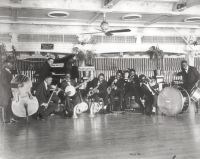
Photo Hogan Jazz Archives
It is not by coincidence that the decade of the 1920s has come to be known as "The Jazz Age." This was the time when jazz became fashionable, as part of the youthful revolution in morals and manners that came with the "return to normalcy" following World War I. Americans were now more urbanized, affluent, and entertainment-oriented than ever before. The music industry was quick to take advantage of the situation. In 1921, 100 million phonograph records were produced in the United States (compared to 25 million in 1914). Two years later production remained high at 92 million, setting a trend, which continued, for the better part of the decade (until the impact of radio). This prosperity relied heavily on the demand of records by dancers. They could be used at home for practicing the latest steps, including such exotic dances as the Shimmy, the Charleston, the Black Bottom, and the more utilitarian Fox Trot, also known as "the businessman's bounce." Along the Mississippi River and its tributaries, steamboats offered dance excursions, which provided employment for many New Orleans jazz musicians. In 1918 the Streckfus Company asked St. Louis bandleader Fate Marable to organize a New Orleans band, first on the S.S. Sidney, and then on their flagship the S.S. Capitol. Marable had high musical standards, and his musicians were expected to read music as well as improvise. Marable's recording of "Frankie and Johnny" (recorded in New Orleans for Okeh in 1924) indicates that improvisation was more an afterthought than an objective. This recording still effects a jazz feeling, much like that of the Fletcher Henderson Orchestra, which dominated the 1920s New York scene.
Other bands which worked on the riverboats out of New Orleans were the Sam Morgan Jazz Band, Oscar Celestin's Original Tuxedo Jazz Orchestra, and Ed Allen's Gold Whispering Band. The excursion trade became important for many of the city's black jazz bands. These bands had to file their contracts with the Mobile, Alabama chapter (the closest black local), which was well over a hundred miles away. Having been denied membership into the Musicians Protected Union No. 174, New Orleans white music union, Celestin and others petitioned to establish a local chapter (496) of the American Federation of Musicians in 1926, which ultimately was chartered in Gulfport, Mississippi, because you couldn't have two unions in the same state.
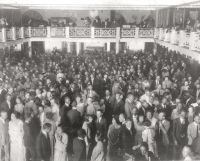
Photo Hogan Jazz Archives
Another of the top performance sites for local jazz bands was the Pythian Temple Roof Garden, part of the multi-story complex run by the Knights of Pythia. Whereas the Streckfus officials usually hired black bands to play on the boat for white audiences, the clients of the Pythian Temple was black affluent, representing a cross-section of New Orleans black middle and upper classes. By the mid-1920s, jazz bands were in demand at the Pythian Temple and debutante balls in the mansions of the Garden District. Jazz musicians who had been earning $1.50 a night working in dance halls and saloons in the District ten years earlier were now making $25 for a night's work at these upscale locations. Growing social acceptance allowed jazz musicians to transcend associations with crime and poverty, which had sometimes haunted music in its earliest days. Even so, for those who wanted to make it to the top of the entertainment industry, all roads led out of town.
During the better part of the recording boom of the 1920s, Chicago was the place to be. The years 1922-1923 yielded a number of important recordings by two bands of New Orleans musicians who had come together in Chicago: the New Orleans Rhythm Kings (originally the Friars Society Orchestra) and King Oliver's Creole Jazz Band. These two groups continued to use many of the elements associated with early jazz recordings, such as stop-time, breaks, and ensemble riffing. However, they did much more with them, thus taking the concept of collective- improvised jazz to a higher artistic level. This included an expanded repertoire of "riffs" and new compositions, a more consistent and "swinging" rhythmic pulse, and "solo improvisation".
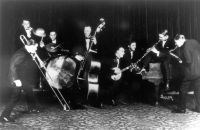
Photo Hogan Jazz Archive
Cornetist Paul Mares led the New Orleans Rhythm Kings, another Laine alumnus, who had worked the riverboats in 1919 before relocating to Chicago in 1920. In late 1921, the band opened at the Friar's Inn on the North Side, where it remained for almost a year and a half. Its most notable players were clarinetist Leon Roppolo and trombonist George Brunies, whose development of solo improvisation is evident in the group's recordings. The first of these were made for Gennett Records in Richmond, Indiana, in August, 1922, and consisted mainly of ODJB songs such as "Tiger Rag" and "Livery Stable Blues" and ragtime-era standards such as "Panama" and "Bugle Call Blues." In March 1923, NORK began to concentrate on original material, especially "Tin Roof Blues," and popular material of the day, such as "Sweet Lovin' Man," a Lil Hardin composition soon to be recorded by Oliver's Creole Jazz Band. Perhaps the band's most interesting recordings were those done in July, 1923, with the famed composer and pianist Jelly Roll Morton, a New Orleans Creole of color who had been among the first jazz musicians to take the music on the road. Classic renditions of "Milneberg Joys" (sic), "London Blues," and "Clarinet Marmalade" resulted, but the sessions were not only musically significant. This was the first racially integrated jazz recording session. Crossing the color line in Indiana–a state where the Ku Klux Klan was politically powerful in the 1920s–was potentially hazardous, even for something as anonymous as a recording session. Yet, what mattered to the individuals were the respective talents of the musicians involved. They all shared a common understanding of the New Orleans idiom that enabled them to interact effectively.
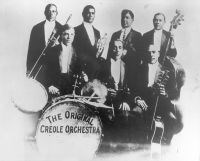
Photo Hogan Jazz Archive
King Oliver's Creole Jazz Band is often remembered today as the vehicle, which brought a young Louis Armstrong to wide public attention. In its recording heyday the band was a cooperative outfit which depended on the considerable talents of all its members to create a sensation in the nightclubs of Chicago's South Side and in the recording studios of Gennett, Paramount, Columbia, and Okeh. Armstrong's arrival in the summer of 1922 was the final touch in the band's evolution. The band was known for spectacular dual breaks which Oliver created with his young protégé. Many observers and listeners regarded the Creole Jazz Band as the finest jazz band of its day. It was the first black jazz band to record extensively. Oliver had a hand in the composition of most of the recorded material. He shared credit for "Snake Rag" and "New Orleans Stomp" with clarinetist Alphonse Picou; "Dipper Mouth Blues" and "Canal Street Blues" with Louis Armstrong; and "Working Man's Blues" with Lil Hardin, in addition to his own tunes, "Chimes Blues" and "Just Gone." These recordings were a summation of the best elements, which had formed New Orleans-style jazz up to this point. The contributions of Joe Oliver, Louis Armstrong, and Johnny Dodds as soloist (like those of Roppolo and Brunies) indicated the course that jazz was destined to follow. However, the glory days of the Creole Jazz Band were of short duration. Following the success of the records, the band's cooperative spirit started to disintegrate. Several members felt that King Joe had become too dictatorial, refusing to share credit for the records' popularity. In 1924, Lil Hardin (who became Mrs. Armstrong in that year) persuaded Louis to join Fletcher Henderson as a star soloist in New York. The Dodds brothers were pursuing a career on their own. Oliver was left to pick up the pieces, forming a big band, the Dixie Syncopators by the end of the year.
Shifts in popular tastes began to undermine the influences of New Orleans style bands in a number of ways. Orchestras became larger, following trends set by Fletcher Henderson, Duke Ellington, Jean Goldkette, and Paul Whiteman. Star soloists took the spotlight, abandoning the collective approach to improvisation. Composers and arrangers controlled the balance between soloists and sections of instruments that supported them in the big band format. Ironically, it was two New Orleans musicians who perhaps best illustrated these trends. Jelly Roll Morton became recognized as the first great jazz composer.
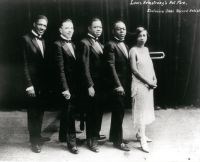
Photo Hogan Jazz Archive
The goal of every jazz musician is to find their own "voice," a sound that is at once unique and identifiable. One of the best examples is Louis Armstrong whose distinctive tone on cornet and personal singing style changed the course of American music. Armstrong's Hot Five was the vehicle for his growth as a jazz musician. In this group, he raised the New Orleans collective concept to unparalleled heights of creativity and then set a new direction with the sheer brilliance of his solo performances. Although the idea for the Hot Five is often attributed to Lil Hardin Armstrong, it was in fact a New Orleans musician and promoter, (Richard M. Jones), who conceived the notion of showcasing Armstrong in a recording band. Beginning in November 1925, the Hot Five produced almost three dozen records for Okeh (which was acquired by Columbia in 1926) and revolutionized the jazz world in the process.
The band's first hit was "Heebie Jeebies" (recorded in February, 1926), which was notable for Armstrong's "scat" vocal, a practice using wordless syllables to create instrumental effects with the voice. However, it was not until the spring of 1927 that Armstrong broke entirely free of the collective format with his rendition of "Wild Man Blues" (credited to both Armstrong and Jelly Roll Morton). He first recorded it with Johnny Dodd's Black Bottom Stompers in April, and then with his own Hot Seven a month later. The earlier Hot Five recordings contained numerous dramatic examples of the cornetist's solo artistry (as in "Cornet Chop Suey," "My Heart," and "Gutbucket Blues"). "Wild Man Blues" was mainly a series of extended solos, one after another, in which the intensity kept building to a dramatic climax. Armstrong's breathtaking display of technique combined with ingenuity here confirmed his status as the first superstar of jazz.
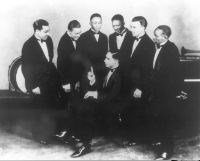
Photo Hogan Jazz Archives
For many, Jelly Roll Morton's principal contribution to the growth and development of New Orleans jazz lies in his accomplishments as a composer and band leader. Morton has been identified as the first great composer of jazz–a role that started with the publication of his "Jelly Roll Blues" in 1915. Especially with his Red Hot Peppers recordings from 1926 to 1930, Jelly combined elements of ragtime, minstrelsy, blues, marches and stomps into a jazz gumbo which anticipated many of the characteristic associated with the larger Swing Bands of the 1930's. He polished the New Orleans style according to his own vision; balancing intricate ensemble parts with improvised solos by carefully chosen side men. Morton was also a brilliant piano soloist, capable of using the full extent of the keyboard to recreate the sound of a band. As a composer, soloist, and ensemble player, Morton moved rhythms beyond the stiffness of ragtime into the looser and more exciting feel of swing. In addition, Jelly Roll Morton was quite likely the first "philosopher of jazz". He was the first to expound on the principles that governed the music, and his Library of Congress interviews with Alan Lomax in 1938 became for many a last testament for understanding the work of New Orleans jazz pioneers. Yet, by 1938, Morton was already a "forgotten man," having been dropped by Victor, his recording company, in 1930. While Armstrong managed to adapt to the changes in the music business during the Depression years Jelly sank into obscurity. He died in 1941, just as his music was being rediscovered with the New Orleans revival. The magnitude of his recorded legacy lives on in compositions such as "Black Bottom Stomp," "Jungle Blues," "The Pearls," "Steamboat Stomp," and "Georgia Swing". His creative imagination was particularly evident in "Sidewalk Blues," which combined hilarious "hokum," the blues, classical themes, various rhythmic effects and mood changes. "Dead Man Blues" opens with a quote from "Flee As A Bird," a dirge common at New Orleans brass band funerals, providing yet another indication of how Morton took his inspiration from the city of his birth, no matter where his travels led him. While Morton's music reflected elements drawn from the mood and spirit of many places, and musical styles, the influence of the crescent city remained ever present as a source of inspiration.
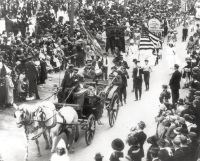
Photo Hogan Jazz Archive
Like democracy itself, the collective improvisation which characterized New Orleans-style jazz required a delicate balance between the individual's desire for freedom and the community's need for order and unity. While the collective approach was crucial as a context for musical experimentation in the earliest days, it was individual creativity and charisma, which propelled jazz along the path to the future. Many of the jazz "stars" of New Orleans left town to follow their destiny–Oliver, Armstrong, Ory, Morton, the Dodds brothers and Sidney Bechet became legends —but the jazz scene back home continued on its own terms after their departure. Indeed, many of the most significant features of the Crescent City's musical landscape, especially the brass bands, remained unknown outside of New Orleans. As far as the recording industry was concerned, these groups were not commercial. It wasn't until the mid-1940s that an attempt was made to document this part of jazz heritage. The first brass band recordings were of smaller groups created especially for the sessions. Bill Russell recorded Buck Johnson's brass band in 1945 and Rudi Blesh did the Original Zenith in 1946. Finally, in 1951, Alden Ashforth recorded the Eureka, a regular New Orleans brass band. Yet, brass bands were absolutely essential to the New Orleans environment throughout the entire period.
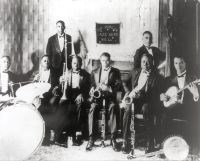
Photo Hogan Jazz Archives
Furthermore, many gifted players stayed home in the 1920s, giving rise to the remarkable diversity found in local jazz recordings by Celestin's Original Tuxedo Jazz Orchestra, the Halfway House Orchestra, A.J. Piron's New Orleans Orchestra, the New Orleans Owls, Johnny DeDroit, Louis Dumain, the Jones & Collins Astoria Hot Eight, John Hyman and Bayou Stompers, and the Sam Morgan Jazz Band. None of these recordings became "hits" in the manner of Armstrong and Morton, but they reveal an essential truth–that the New Orleans music scene remained a fertile ground for creative musicians of diverse backgrounds, who were united by a common love of the music and a reverence for the culture that produced it.
Sources of Contribution: Bibliography
What Is Louis Armstrong's Favorite Color
Source: https://www.nps.gov/jazz/learn/historyculture/jazz_history.htm